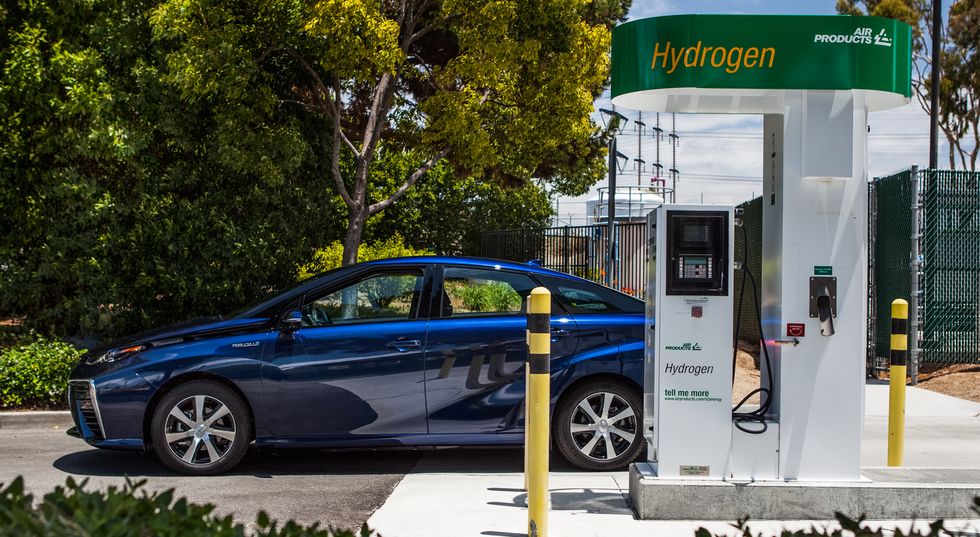As the world looks for ways to become more environmentally friendly, many industries are beginning to explore new technologies that will help them reduce their carbon footprint. The automotive industry is no different, and one type of vehicle that has gained traction in recent years is the hydrogen car
Hydrogen vehicles have been in development since the early 2000s, but it wasn’t until recently that they began to enter the market in earnest. Thanks to government initiatives promoting the progress of the fuel cell industry and heavy investment in core technology, hydrogen cars are now a reality for many consumers.
There are a wide range of application types for hydrogen vehicles due to their simplicity and flexibility, making them an attractive option for many different types of consumers. Additionally, traditional fuels have significant environmental externalities, including air pollution, water pollution, plastic pollution, and oil spills. Hydrogen vehicles offer a cleaner and more sustainable alternative to traditional gasoline-powered cars
In this blog post, we’ll take a look at the rise of hydrogen vehicles and explore some of the reasons why they are becoming increasingly popular.

What Are Hydrogen Vehicles?
Hydrogen vehicles are powered by fuel cells that convert hydrogen gas into electricity. This electricity is then used to power an electric motor, which turns the wheels of the car. Hydrogen cars emit only water vapor and heat as exhaust, making them a much cleaner option than traditional gasoline-powered cars
Fuel cells have been used in a variety of applications for many years, but it wasn’t until recently that they began to be used in automotive applications on a large scale. One of the main challenges facing the development of hydrogen cars has been finding a way to store hydrogen gas safely and efficiently. However, thanks to advancements in technology, this is no longer a major obstacle
There are two main types of storage methods for hydrogen cars: high-pressure tanks and metal hydride tanks. High-pressure tanks store hydrogen gas at pressures up to 10,000 pounds per square inch (psi). Metal hydride tanks use a metal alloy that absorbs and stores hydrogen gas at lower pressures (around 700 psi). Both types of storage methods are considered safe and efficient ways to store hydrogen gas for use in fuel cell vehicles.

The Benefits of Hydrogen Vehicles
There are many reasons why hydrogen vehicles are becoming increasingly popular. First and foremost among these is their environmental friendliness. As mentioned earlier, hydrogen cars emit only water vapor as exhaust, making them much cleaner than traditional gasoline-powered cars. Additionally, the production of hydrogen gas from renewable sources such as solar or wind power further reduces their environmental impact .
Another benefit of hydrogen vehicles is their efficiency. Fuel cell electric vehicles (FCEVs) have an overall efficiency of around 60%, while gasoline-powered internal combustion engine (ICE) vehicles have an efficiency of around 20%. This means that FCEVs can travel about three times as far on the same amount of fuel as ICEVs
Finally, hydrogen cars offer drivers a number of conveniences that ICEVs cannot match. For example, refueling a FCEV takes about the same amount of time as refueling an ICEV—about 5-10 minutes—and can be done at any standard fueling station equipped with hydrogen pumps. Additionally, there is no need for drivers to worry about Range Anxiety—the fear of running out of fuel while on the road—as FCEVs can travel long distances on a single tank of fuel (300 miles or more).
Hydrogen vehicles offer many benefits over traditional gasoline-powered cars, including increased efficiency and cleaner emissions. Thanks to government initiatives and heavy investment in core technology, hydrogen cars are now a reality for many consumers. With their simplicity and flexibility, hydrogen cars are sure to continue gaining popularity in the coming years as more people look for ways to reduce their environmental impact.







